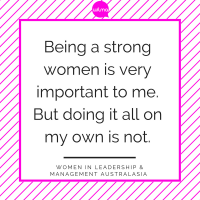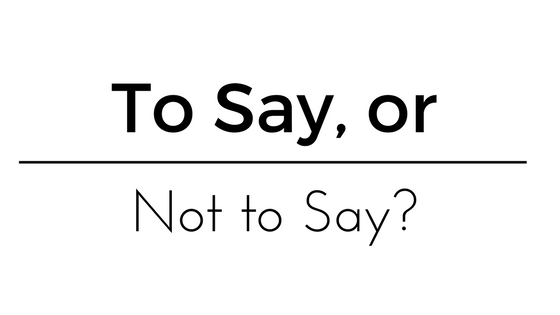Australian captains of industry have delivered an inspired commentary on the importance and need to bridge the gender gap in management ranks, the social and commercial benefits of having more women in management and their support of internal measurable targets.
At least, that is the rhetoric.
Reading their responses about the need for more women could lead someone from another planet to think this was an issue as important to big business leaders as, say, earnings growth or share price. They all claim to be making progress on what they describe as a major priority.
ANZ chief executive Mike Smith says gender should be treated like any other critical problem.
And it is inescapably noteworthy that of the 30 business heavyweights polled by Fairfax, only one was a woman.
But the numbers of females in senior management positions in large – and for that matter smaller – Australian companies remain a dismal embarrassment. The glass ceiling is as impenetrable as it has ever been.
A study by the Workplace Gender Equality agency released in November 2014 found that women made up just a quarter of those employed in the key management positions of Australian companies.
As well as an under-representation of women in management positions, the findings revealed the average full-time earnings of men were almost 25 per cent more.
And the largest listed companies on the Australian Securities Exchange rate particularly poorly in this regard. Among the top 200 public companies, the proportion of female managers that report directly to the chief executive is less than 20 per cent, whereas across all companies with more than 100 employees that proportion is 29.3 per cent.
The numbers compiled by the Workplace Gender Equality Agency form a clear pattern that the less senior the management position the higher the proportion of women.
At the board level the top 200 counts only 18.5 per cent female membership and 6.3 per cent chairwomen.
This is not to suggest that executives are consciously avoiding promoting women. But the mechanisms being used to enhance the numbers of senior women are clearly not effective.
The industry chiefs were asked whether Australia should create quotas for women in management and the near-resounding response was “no“. Ten Network chief executive Hamish McLennan was the exception.
There was a consensus that targets were helpful and that enablers like more flexible work hours were a positive, but their fail safe argument against mandating numbers was that it cut across merit-based promotion.
The most insightful comment was delivered by ANZ chief executive Mike Smith. “We need to start treating this like any other business critical issue, where you would develop a strategy to fix the problem, set targets and measure ourselves against those targets.”
However, the reality is that most companies don’t treat gender equity as a business critical issue. A very small number of boards include progress in female management participation in the mix of the chief executive’s performance-based pay bonus. And for those that do it makes up only a very small part.
Incentive-based bonuses are far more skewed to financial outcomes like return on assets or total shareholder returns.
Female management participation is one of those issues that is on a wish list rather than a priority list, despite the importance it is given by big business chief executives polled by Fairfax.
Reading their responses to questions of gender imbalance would at least lead one to think that given the level of recognition, progress must be under way. Some of the chief executives polled, including Telstra’s David Thodey and Woolworths’ Grant O’Brien, are part of a group known as Champions for Change, which promotes women in management.
Here is a smattering of their replies.
“As an organisation, we have also focused on attracting women into financial services, for example through promoting finance careers to female secondary school and university students. We see this as a means of ensuring we can continue to increase representation of women at all levels of our organisation,” said Nicholas Moore, chief executive of Macquarie Group.
Mike Hurst, chief executive of Adelaide and Bendigo Bank, said: “I absolutely agree we need to be facilitating the careers of talented women. Importantly, we need to find a way to ensure women feel appropriately skilled to challenge for senior roles.”
AMP chief executive Craig Meller said: “At AMP we actively look for ways to create a diverse and inclusive workforce, as it is crucial to achieving better outcomes for our customers, employees and shareholders.”
“We have a particular emphasis on increasing female representation in key operational roles to address the historical gender imbalance that we have seen in our industry,” BHP Billiton’s Andrew Mackenzie said.
Mark Steinert, the boss of one of the largest property companies, Stockland, said: “In our experience what gets measured, gets managed, so we’ve set clear targets and included them in our leaders’ key performance indicators. We set a target to increase the percentage of women in management roles to 45 per cent by 2017.”
Indeed, there are many chief executives that claim to have large numbers of female managers. But the reconciliation of these big claims with the government’s Workplace Gender Equality Agency statistics is often a matter of definition of who can be called a manager.
The last word on the subject should go to Coca-Cola Amatil boss Alison Watkins, one of the very small minority of women leading a large Australian company.
“I am a firm believer in allowing companies to decide on the best ways to implement and meet diversity targets as opposed to setting strict quotas. The concern, however, is that change is happening very slowly. Female representation in C-suite roles is still very poor in Australia.”
This article was originally published on The Sydney Morning Herald 7th January. Read the original article here.









Leave A Comment